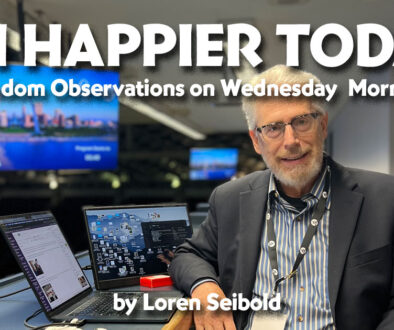Why Does the Public Reject Science?
by Mailen Kootsey
A summary and commentary on: Keith B. Miller, “The Nature of Science and the Public Debate over Anthropogenic Global Warming,” Perspectives on Science and Christian Faith, Vol. 64, No, 4, pp 220-229 (December 2012).
The public is usually enthusiastic about new technologies for lifestyle, entertainment, communication, or exploration. Acceptance is much more reluctant, however, when scientific developments call for a change in belief or opinion. Why is it that a significant percentage of the public does not accept scientific consensus views on such topics as global warming, evolution, and vaccines? Writing in Perspectives on Science and Christian Faith, Keith Miller analyzes the public debate over global warming, sorting out five misconceptions about the nature of science and the scientific community that distort the public evaluation of a carefully-researched scientific consensus.
FACTS
The first misconception in Miller’s list is that the public sees science as a search for unchanging scientific “facts”. “However,” says Miller, “if ‘fact’ means an objective statement of the true nature of the physical universe, there are very few ‘facts’ in science.” The best that scientists can do is to record observations and then build an approximate understanding of the natural world on these observations.
Even with the aid of remarkable new instruments and computers, recorded observations are still a limited snapshot of reality. There is no way to prove that more observations would not change a current view. Nevertheless, basing a theory of nature on experiments and observations does maintain a connection with reality. Scientists, as part of the scientific method, have practices designed to minimize the limitations of observation and theory. For example, repetition of an experiment is always necessary, not only by the initial observer, but also by other scientists – the more diverse, the better.
THEORY
Observations (data) by themselves are not helpful for living in a real universe, no matter how large the collection. What humans crave is accurate predictions, ways to know the results of myriad everyday choices. Human experience is just too diverse to predict by making an encyclopedia of all experience. Scientists are thus challenged to find consistent patterns in observations, showing that the natural world behaves in regular and predictable ways. With enough of these patterns, it may be possible to construct cause-effect relationships as shortcuts to making predictions. The process of going from observations to patterns and ultimately to cause-and-effect relationships is what it means to construct a scientific theory.
For scientific lay persons, the theories of science may seem indistinguishable from science fiction, guesses, or speculations. In actual practice, scientific theories are always based on observations. Imagination and creativity are required to find the patterns, but data always constrain the results. Also, theory building is not completed in a single attempt. Rather, a good theory is tested repeatedly with new experiments and observations. Some theories fail, but each successful test brings increasing confidence in a theory.
Skeptics sometimes complain that a theory based on observations has not been “proven.” True, scientific theories are never proven in the absolute sense that a mathematical theorem is proven from axioms. Instead, confidence in a scientific theory is increased by repeated and varied experimental tests.
UNCERTAINTY
Public detractors of science often raise the issue of the uncertainty in science. There are multiple sources of uncertainty in the scientific process: measurement precision, too little data, inherent randomness in the process under study, and an incomplete understanding of the natural mechanisms involved. Uncertainty is thus always present in attempting to predict natural events or outcomes. Scientists work to reduce uncertainties by various means, such as improving instrumentation and repeating experiments. A good scientific report describes not only the conclusions from the observations, but also the uncertainty in the conclusions.
The public can easily be made uncomfortable with science by quoting uncertainties when an important decision must be made. If a scientific theory is not “proven,” then it is not wise to act on the basis of the theory, it is argued. But scientific theories of natural processes are never proven in an absolute sense. The value of a theory is best described in terms of a level of confidence based on repeated testing. Pleas to wait for science to achieve an unobtainable level of certainty only produce delays. Even a theory with some uncertainty is a better basis for decision making than rumors, unsubstantiated claims, or outright guessing. Failure to act is also a decision that may have consequences.
IMPORTANCE OF SCALE AND CONTEXT
“Any process will act only within a particular range of time scales,” says Miller. Trends can only be recognized and understood in the context of a particular time and space scale. This principle is especially applicable to the current hot topic of climate change. Is hurricane Sandy or an especially hot summer evidence for climate change, for example?
Miller lists six major mechanisms that determine global climate: solar radiation, plate tectonics, ocean circulation, atmospheric composition, albedo, and human causes. These mechanisms have effects at time scales ranging from years to billions of years. Variations of some mechanisms can produce effects on widely different time scales. For example, ocean circulation can be at the root of changes on a scale of years (El Nino and La Nina oscillations) all the way to tens or hundreds of millions of years (changes in the shape or connections of ocean basins).
No single climate event or even an unusual season can by itself be attributed to climate change. Only trends studied over years or much longer intervals can be valid evidence for or against climate change. Similarly, unusual localized weather events are not evidence for global climate change. For example, in North America the Winter of 2009-2010 was unusually cold, but by itself, that observation is not evidence for or against global climate change because it refers to a limited region.
REJECTION OF SCIENTIFIC CONSENSUS
Any new scientific theory is not complete until it has been debated within the scientific community and a consensus is reached. This process includes replication of experiments under as wide a range of conditions as are appropriate and detailed comparison of the new theory with previous ideas and related concepts. The more diverse the participants in the discussion and the broader the range of disciplines brought to bear, the greater the weight given to the consensus. A consensus conclusion reached in this way is not easily overturned, and rightfully so.
The public can easily have quite a different view of the consensus process. The consensus, while it is a majority view, does not mean that everyone in the scientific community agrees with the conclusion. Without an understanding of uncertainty in science, an overwhelming consensus conclusion of the scientific community may be rejected because of a critical argument from one or a few individuals. The public is not likely to be able to give correct weights to the community consensus and the detractor’s idea, concluding therefore that the scientific consensus is not valid. The media may also reinforce the public’s mistaken conclusion by giving equal weight to dissenting scientific views that have limited credibility—all in the media’s attempt to give a “balanced” view.
“Consensus is also often rejected because of a perception that the majority is driven by social, political, or religious motives,” writes Miller. The public is accustomed to advocates of all kinds presenting selected or even manufactured “truths,” and they can easily regard the scientific consensus in the same way. “Uncomfortable scientific conclusions are dismissed as attempts to advance a hidden agenda. This is seen in the charges of materialism and atheism leveled at evolutionary biologists by those who see evolution as in conflict with the Bible.”
CONCLUSIONS
When a conclusion from the scientific community contradicts a widely-held public view, there are multiple reasons why the public might reject the scientific view. It is therefore essential for the value of the scientific case to be presented as a description of the real world derived by a careful and organized process from observations, with every effort made to eliminate personal biases and agendas. Uncertainty is always present in scientific theories, but they still represent the best efforts of a careful and dedicated community.



